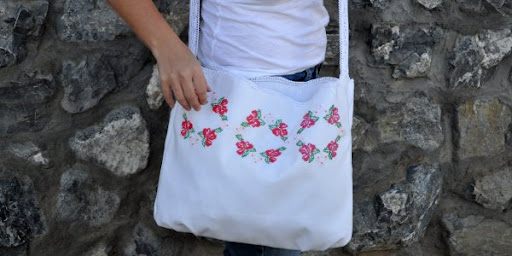
So um yeah...This tutorial will teach you how to turn a Pillow case into a stylish bag. For you or your younger daughter. I have done this and it turns out to be quite good so good you could sell them. So with that being said lets dive right in and get started shall we.
I already told you about my addiction to vintage pillow cases, they have personal details that work great for all sorts of things – clothing, clutches, pillows, bags, aprons. If you look through your local thrift store stock your bound to find some with hand embroidery for right around a dollar. At a vintage or antique store you will pay anywhere from $4 on up. My last visit to my local DI (like a goodwill) I scored five of them, and this was one of them.


Here is how I did it:
Turning a Pillow Case Into a Shoulder Bag Or Cross Body Tote
Supplies:- all your sewing stuff
- pillow case, any will do, but I highly recommend saving one from a thrift store, oh the thrill of the hunt!
- matching thread
- interfacing for liner if you want, I used a lightweight one
- material for straps, I used a basic crochet trim to match














Have you found any great pieces where someone has put a lot of work into them, and you think they might be happy to see someone enjoying it? Even if you did cut it up a bit?!
More great tuts at The Mother Huddle












0 comments:
Post a Comment